It’s been the subject of speculation for weeks, “knowledgeable sources” chattering amongst themselves about the possibility China’s BYD is in talks with Stellantis as it looks for a way to crack into the U.S. market. The two makers have firmly dismissed the rumors. But there seems little doubt Chinese automakers want to target the world’s second-largest automotive market and are sniffing around the North American auto industry looking for a way to break in.
A decade ago, Chinese automakers were struggling to keep up with booming demand in their home market. Exports were minimal, and most came from foreign-owned manufacturers like General Motors which shipped a handful of Shanghai-built Buicks back to the U.S. But, as China’s domestic sales have flattened out, that’s encouraged a growing focus on exports.
Outside the home market, China sold barely 1 million vehicles in 2020, a figure that surged to 5 million last year. In 2024, sales of Chinese-made vehicles have risen eight-fold over year-before numbers, according to Reuters and other news reports. Significantly, it’s not foreign brands like GM, Ford or Volkswagen responsible for that growth but rapidly-growing domestic Chinese brands such as Geely – owner of the Volvo and Polestar marques – and BYD. The latter, focused largely on battery-electric vehicles, outsold Tesla for the first time during the final quarter of 2024.
With the exception of a handful of products, such as the Buick Envision and Lincoln Nautilus, Chinese-made vehicles are notably absent from the U.S. market. And, if the rest of the industry had its way, they would stay out. Indeed, one of the few places where both the Democratic and Republican parties seem to agree as they head towards the 2024 election is a desire to block out Chinese automakers.
Considering the vast potential of the U.S., an automotive market second in size only to China itself, it seems all but certain Chinese carmakers are looking for ways to break in. And, according to rumors that had been circulating for weeks in automotive circles, Chrysler was a potential backdoor path.
An “extinction-level event”
Chinese brands have grown rapidly in much of the world. Not only have they grown eightfold in Brazil, and nearly as fast in other Latin American markets, but analysts are forecasting thatthey’re set to double their market share in Europe after reaching 5% in 2023. They’re focused largely on the emerging EV market and offering products like the new BYD Shark pickup at prices substantially below those of Western, Japanese and Korean brands.
That’s got U.S. manufacturers in a panic. The Alliance for American Manufacturing, which represents a broad array of U.S. and other automakers, has warned the arrival of Chinese brands would create “an extinction-level event” for the rest of the industry.
Politicians have been listening. The Trump administration put in place a number of tariffs on Chinese imports. The Biden administration followed up this past year by quadrupling import duties on Chinese EVs to 100%, while also raising duties on batteries and other automotive parts and raw materials. Meanwhile, the Inflation Reduction Act passed by Congress in 2022 set minimum content laws covering federal incentives of up to $7,500 for EV buyers. These moves were seen as largely countering the cost advantage of Chinese autos.
But could the Chinese find a work-around? U.S. trade negotiators thought they’d stymied Japanese automakers back in the 1980s by coming up with supposedly “voluntary” import restrictions. Brands like Honda, Nissan and Toyota duly cut back on imports – and then began building a vast network of U.S., Canadian and Mexican factories.
Buying their way in?

President Joe Biden quadrupled duties on Chinese-made EVs, a move that experts say should price the imports out of the American market.
Could China follow the same course? BYD has gone on the record saying it wants to build an assembly plant in Mexico, a site expected to be announced sometime during the fourth quarter of this year. Stella Li, the CEO of BYD Americas, has stated that the company currently doesn’t want to enter the U.S. – but those who follow the company, including Headlight.News Mexico contributor David Loji, have gotten indications this position could be reversed following the upcoming U.S. elections.
While that might mean shifting plans for a North American plant from Mexico to the U.S., there could be other possibilities. “For Chinese companies like BYD, purchasing a legacy brand would make entering the U.S. marked a lot easier than launching a new brand in an already crowded market,” said Sam Abuelsamid, the principal automotive analyst with Guidehouse Insights.
That may be more than an academic issue. Ever louder, that question has been raised in recent weeks by “knowledgeable sources” claiming to have heard or seen or been told about representatives of BYD visiting Stellantis facilities and meeting with counterparts from the Euro-American automaker.
The focus of their interest? If the rumor mill is to be believed? It’s the long struggling Chrysler brand.
More Chinese Auto News
- Could Stellantis Axe One of its Brands? Which Are Most Vulnerable?
- Sales Crashing, Stellantis Orders Temporary Layoffs
- Stellantis CEO Tavares Looking to Fix Automaker’s North American Problem
Fueling the rumors

Stellantis CEO Carlos Tavares in July said there were “no taboos” about potentially axing under-performing brands.
Stellantis CEO Carlos Tavares helped fuel the speculation during a July 25 earnings call when he said, “There’s absolutely no taboo” that would restrict Stellantis from eliminating one of its 14 automotive brands. “If they are not able to monetize the value that they represent, then decisions will come,” Tavares added.
Stellantis officials have stressed that all 14 of the Stellantis marques are currently profitable. But there are some brands that appear to be marginal contributors, with Chrysler clearly considered the weak link in the chain. After abandoning its aged Chrysler 300 sedan this past year, the once iconic division now has but one product to offer, the Pacifica minivan. And while future products are promised – such as a production version of the Airflow concept – its unsure when anything actually will flesh out the line-up.
“Of all he American brands, Chrysler would make the most sense,” said Abuelsamid – a sentiment seconded by Sam Fiorani, chief analyst with AutoForecast Solutions, who said he’d “not be surprised” if Chrysler were to land in the BYD crosshairs, though he thought a deal would ultimately be “unlikely.”
No deal
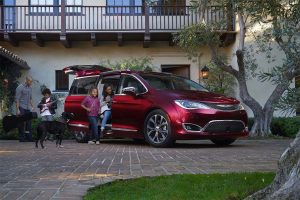
Both BYD and Stellantis said they are not talking about a sale of the Chrysler brand — its Pacifica minivan shown here.
For its part, BYD is denying any plans to acquire Chrysler. On the company’s official account on the Weibo microblogging site, BYD brand general manager Li Yunfei wrote that it is fake news. “Do not believe rumors, do not spread rumors,” he wrote.
For its part, Stellantis issued a statement saying it “denies this categorically as the company is not in discussions with BYD of any kind. Period.”
While that may be the case, it is clear Stellantis has some problems to deal with, notably with its North American operations where sales and earnings have faced setbacks this year, There have been shake-ups in senior management, among other things at the Dodge, Jeep and Ram brands, and the CEO is reportedly meeting with the top North American team this week at U.S. headquarters in Auburn Hills, Michigan to work on a revival plan.
What next for BYD and the other Chinese automakers
While BYD appears to be ruling out any plan involving Stellantis, analysts and industry insiders believe it’s just a matter of time before that automaker and other Chinese rivals push forward with plans to crack into the U.S. market.
They could take the approach BYD previously suggested, setting up production in Mexico where they’d get labor cost advantages in line with China. And they could try to leverage the United State-Mexico-Canada Agreement, the revised NAFTA. But there are strictures, such as requiring the use of roughly 72% local content. The U.S. might also push back, even then, said Fiorani, finding ways to block a Chinese brand, even with the free trade agreement.
Presidential nominee Donald Trump in 2023 harshly criticized Ford’s plans to partner with Chinese battery maker CATL on a plant in Michigan. He also has said he’d hit Chinese manufacturers with 200% tariffs on Mexican-made vehicles.
But he appeared to reverse course when, last month, he said he’d welcome Chinese automakers to set up auto assembly plants in the U.S. “Those plants,” he said during the GOP National Convention, are going to be built in the United States and our people are going to man those plants.”
How will Americans take to Chinese brands?
Neither the Biden administration nor Democratic candidate Kamala Harris have followed up on Trump’s statement. It’s unclear if they would welcome Chinese auto manufacturing as an acceptable alternative to auto imports.
Perhaps the bigger question is how Americans will respond to Chinese automobiles, if and when they arrive — and wherever they’re produced. So far, Buick, Ford and Volvo have been able to move their Chinese-made metal – though there has been indication at least some buyers are steering clear of models imported from the Asian nation. In many cases, industry watchers say, consumers are simply unaware of where most products originate.
Still, analyst Abuelsamid says brands like BYD could feel the impact of “xenophobia” at a time when U.S. – Chinese relations are at a low point. It could, he said, be a lot harder for them to crack into the U.S. than other markets, such as Europe and Latin America.


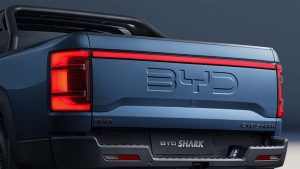

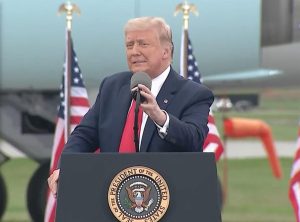

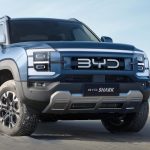



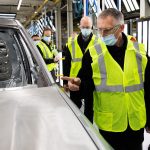

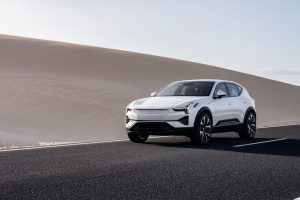


0 Comments